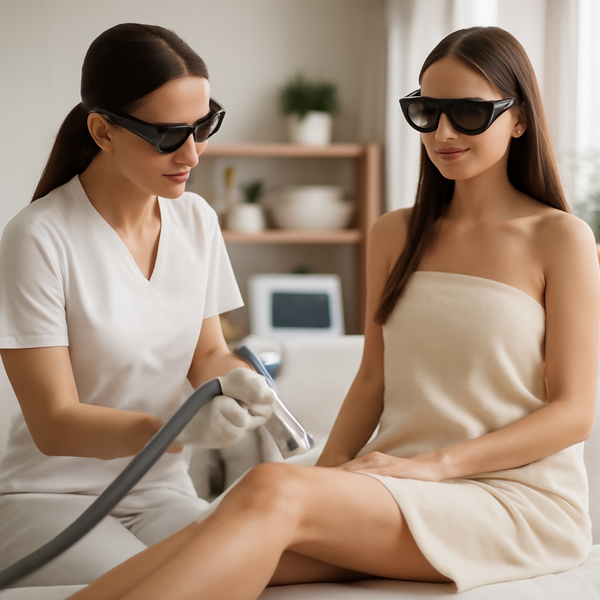
Laser spider vein removal is a popular cosmetic procedure designed to address the appearance of small, damaged blood vessels that often manifest as red, blue, or purple lines on the skin. These superficial veins, commonly found on the legs and face, can be a source of self-consciousness for many individuals. The minimally invasive nature of laser treatment makes it an attractive option for those seeking to improve the overall look and feel of their skin without extensive downtime. This advanced technology targets the problematic veins with focused light energy, causing them to gently collapse and fade away over time, revealing clearer, more even-toned skin.
How Laser Spider Vein Removal Works
The principle behind laser spider vein removal involves the targeted application of specific wavelengths of light energy. When this light energy is absorbed by the pigment in the blood within the spider veins, it generates heat. This controlled heat causes the vein walls to coagulate and seal off. As the body naturally processes and eliminates the treated vein, it gradually disappears from view. Different types of lasers are used depending on the size, depth, and color of the spider veins. For instance, pulsed dye lasers and Nd:YAG lasers are commonly employed for their efficacy in treating vascular lesions. The procedure typically involves a cooling device or gel to protect the surrounding skin and minimize discomfort. Multiple sessions are often recommended to achieve optimal results, as each treatment can address a portion of the spider veins, leading to a progressive improvement in skin clarity and appearance. The duration and intensity of each session are customized based on the individual's specific needs and the extent of the vascular concerns.
Benefits and Expectations of the Procedure
One of the primary benefits of laser spider vein removal is its effectiveness in significantly reducing or eliminating the appearance of these cosmetic imperfections. Many individuals report a noticeable improvement in skin tone and a boost in confidence following the treatment. Unlike more invasive surgical options, laser therapy is a non-surgical procedure that requires minimal to no downtime, allowing individuals to resume their daily activities immediately after a session. While some mild redness, swelling, or bruising may occur in the treated areas, these side effects are temporary and typically resolve within a few hours to a couple of days. It's important for individuals to have realistic expectations; while the procedure is highly effective, complete eradication of all spider veins may not be possible in a single session, and new veins can develop over time. Maintaining a healthy lifestyle and following post-treatment care instructions are crucial for prolonging the results and preventing the recurrence of spider veins.
Candidate Selection and Pre-Treatment Preparation
Identifying suitable candidates is a critical step in ensuring the success and safety of laser spider vein removal. Generally, individuals with superficial spider veins, particularly on the legs and face, are good candidates. Those with deeper, larger veins, or varicose veins may require different treatment modalities. The ideal candidate should have realistic expectations about the outcomes and be in good overall health. It is essential to avoid sun exposure to the treatment area for several weeks prior to the procedure, as tanned skin can increase the risk of complications. Patients are also advised to refrain from using certain medications, such as blood thinners, and topical retinoids before treatment, as these can affect the skin's response to laser energy. A thorough consultation with a qualified dermatologist or aesthetician is crucial to assess individual suitability, discuss potential risks and benefits, and outline the treatment plan. This consultation will also involve reviewing the patient’s medical history to identify any contraindications.
Post-Treatment Care and Long-Term Results
Following laser spider vein removal, adhering to specific post-treatment care instructions is vital for optimal healing and to maximize the longevity of the results. Patients are typically advised to avoid strenuous physical activity, hot baths, saunas, and prolonged sun exposure for a period following the procedure. Wearing compression stockings, especially for leg treatments, can help support the healing process and reduce swelling. Applying a cool compress to the treated areas can also alleviate discomfort and any residual redness. It is important to keep the treated skin clean and moisturized. While laser treatment effectively removes existing spider veins, it does not prevent the formation of new ones. Factors such as genetics, prolonged standing or sitting, hormonal changes, and sun exposure can contribute to the development of new spider veins over time. Therefore, maintaining a healthy lifestyle, managing weight, and protecting the skin from the sun are recommended for long-term management and to preserve the improvements achieved through the laser treatment. Regular follow-up consultations can help monitor progress and address any emerging concerns.
Potential Side Effects and When to Seek Medical Advice
While laser spider vein removal is generally considered safe, like any medical procedure, it carries potential side effects. Common temporary side effects include mild redness, swelling, bruising, and a temporary darkening or lightening of the skin in the treated area. These usually subside within a few days. More significant, though rare, side effects could include blistering, scarring, or changes in skin pigmentation. It is important to report any unusual or persistent symptoms to your healthcare provider immediately. This includes severe pain, signs of infection such as increased redness, warmth, or pus, or any significant changes in skin texture or appearance that do not resolve within the expected timeframe. Following the post-treatment care instructions diligently will help minimize the risk of these side effects and promote effective healing. Your medical professional will provide specific guidelines on what to expect and when to seek professional medical attention, ensuring a safe and successful recovery.

